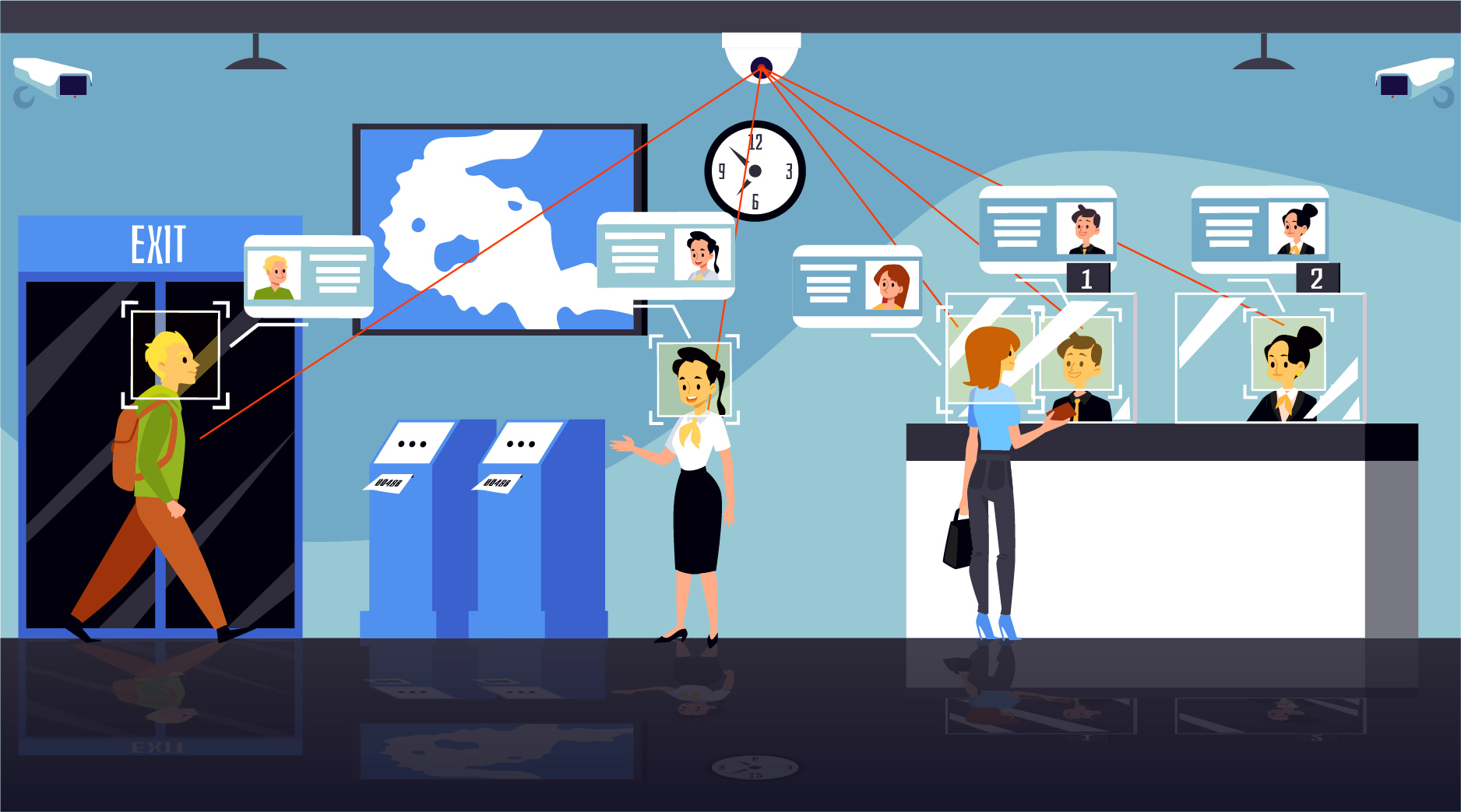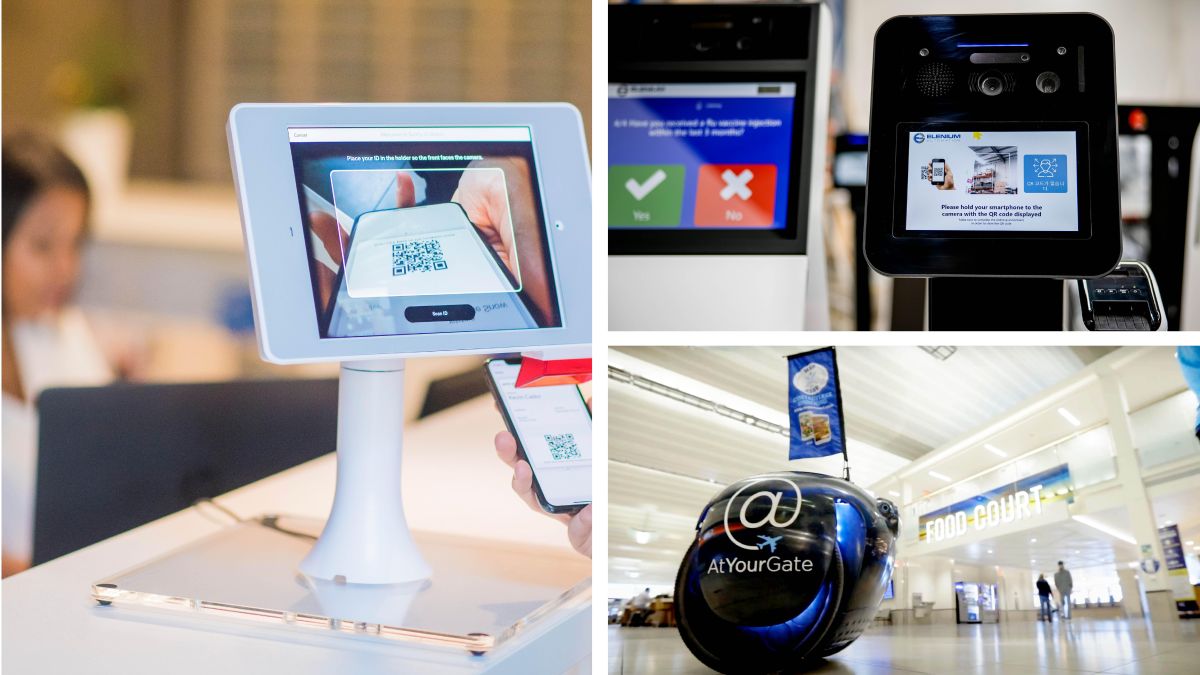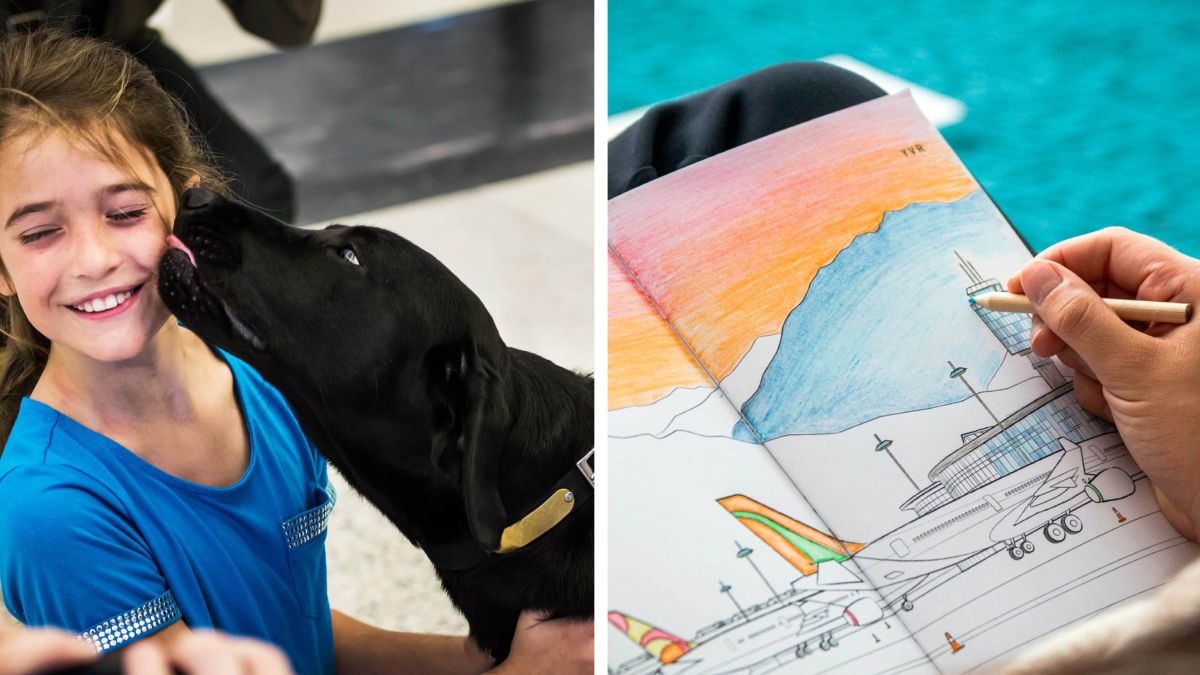Tech support: the systems making travel more inclusive (and efficient)

As borders have opened up around the world, people are satisfying their desire to travel once again. But the environment they encounter in airports, stations and hotels will be vastly different to their pre-pandemic experiences.
By Hassell.
Whether it’s a travel service, technology or an experience, today there’s a greater emphasis on passenger reassurance, assistance, and inclusivity across the sector. This is a time to really look after each valued traveller, and the industry has responded to the shift with spaces and systems that are considerably safer, more efficient, and intuitively supportive.
One of the ways we’re seeing this is through biometric and contactless technology, which is undergoing what feels like overnight growth.
According to the Capgemini Research Institute, 62 per cent of consumers expect to increase their use of touchless technologies once the pandemic subsides.
Further supporting the rise of contactless technologies are service and hosting models. These innovations are increasingly experimental, utilising combinations of robotics, AI and virtual assistants to find the perfect ‘human’ experience.
Finally, travel spaces are also being designed with a broader range of user groups in mind. Catering to travellers with hidden disabilities and mental health difficulties, these spaces are better able to provide for the needs of the individual.
REASSURING TECH
Biometrics and contactless technologies are transforming the travel experience, offering customers the reassurance of hygienic processes while reducing crowding and queueing.
While the technologies are not new, they’ve become higher priorities as the sector rebuilds, with uptake increasing due to travel safety imperatives and consumer preferences.
Research by Valour Consultancy predicts more than a three-fold increase in biometrically-enabled passenger touchpoints in airports over the next decade.
Given this predicted growth, airports and airlines are responding in a number of ways across the customer journey.
In Australia, new security screening processes are being tested to deliver a self-service experience. A partnership between technology firm Elenium Automation and X-ray company Micro-X is leading to the development of a series of voice-controlled booths. These are similar in process to an automated passport control gate or grocery check-out, and ensure passengers are never separated from their baggage. In taking control over their own security, passengers gain a new level of autonomy in the airport experience – while having the assurance of reduced in-person contact.
Facial recognition technology is also expanding beyond border security checkpoints, into check-in, bag drop and boarding touchpoints across the world.
Los Angeles World Airports is one of many to recently install SkyLane, an automatic facial recognition boarding gate. The technology expedites the boarding process – allowing customers to breeze aboard without the need to scan a passport or phone. Delta Airlines has been using similar technology in airports in Detroit and Atlanta.
Airlines also have plans to streamline the boarding process, with Air Asia integrating biometric scanning into its app to support the check-in process. While these platforms generally do not store personal data, some passengers are still hesitant about data protection and elect to opt out.
Contactless technology is also expanding into airport retail, for a more hygienic and efficient experience. For example, travel convenience store Hudson recently launched ‘Hudson Nonstop’, a check-out-free proposition. Deployed in airports across the United States, the store integrates Amazon’s ‘Just Walk Out’ technology. This allows customers to scan their card or app upon entry, collect their items and walk out.
While these formats have been growing in non-airport locations for several years, it is a well-overdue addition to the
airport experience. This is particularly true for nervous travellers anxious to get to the gate or for those seeking to
dedicate more time to exciting parts of the airport experience.
Beyond the gains in efficiencies, biometric and contactless technologies save a significant amount of floor area.
In the short term, those space savings support physical distancing requirements, giving passengers peace of mind. In the long term, it allows airports to experiment with bold experiences beyond retail, building toward becoming more compelling, standalone destinations.

FLEXIBLE HOSTS
As automation increases to make our travel hubs more efficient, personalised services are emerging that offer specialised, tailored assistance.
This is not the big ‘i’ information desk we’ve turned to in airports, or the concierge we sought out in hotels. Instead, we’re seeing service in an array of formats, from on-the-spot remote help to supportive face-to-face hosts (virtual or human).
One example is United Airlines’ ‘Agent on Demand’ service which has been deployed at airports in Chicago and Houston. From anywhere in the airport, passengers can scan a QR code and connect to a virtual assistant via chat, phone or video call. A built-in translation feature enables support in over 100 languages to resolve queries, such as seat assignments, upgrades and rebooking.
In this instance we’re seeing a decentralisation of service, with access to help no longer limited to a physical location. Like the innovation in biometrics, this prevents overcrowding and, longer term, it has the potential to free up space in the terminal for more engaging propositions.
Decentralisation of service is also occurring through the growing market of robot helpers.
A survey by Air Transport IT Insights recently revealed that 32 per cent of airports and nearly half of global airlines are looking for partners to further develop their robotic capability in the next three years.
Philadelphia International Airport and their resident robot, Gita, are getting on board with the opportunity. Developed by technology start-up AtYourGate, Gita delivers food orders to passengers waiting at their gate from 19 of the airport’s retailers. This enables passengers to skip the queues and experience the airport on their terms.
Lounge and hotel operators are also experimenting with new models of service and hosting to support more varied customer needs. For instance, Sydney Airport has recently launched Aerotel by Plaza Premium Group, an in-airport hotel and lounge. Highly flexible, it offers stays for as little as three hours for a reasonable AUD$55 (USD$39), giving passengers a place to replenish between longer connections. Also on offer: a pay-per-use lounge which welcomes non-hotel guests to its comfortable surrounds, unlimited food, showers and luggage storage for AUD$35 (USD$25).
This is an accessible and well-overdue model for customers requiring tailored amenity. It also bridges the gap between expensive, exclusive lounges and the wider airport offer, and ultimately sees airports becoming more nuanced in how they cater to different audience groups.

CONSCIOUS CARE
In recent years, wellbeing, mental health, and social equity have become both a greater talking point and a catalyst for change through community movements both online and on the streets.
The tourism industry has taken notice too, making a conscious effort to provide spaces and services attuned to those with visible and hidden disabilities, mobility requirements and mental health issues.
Kuala Lumpur Airport is working to support people with sensory needs, autism and ADHD. Their program, ‘The Butterfly’s Adventure’, offers mock airport journeys to help travellers and their families acclimatise to the airport’s environment and processes.
These tours include practice scenarios for everything from check-in to security to boarding so people can establish familiarity and build confidence for an upcoming trip. The tours are part of a wider initiative offering a calm room, sensory walls and priority access lanes at major touchpoints.
With similar intentions but a very different approach, Quebec City’s international airport piloted a pet therapy program to relieve the stress of anxious travellers. Research has shown that the presence of a dog, even for just a few minutes, can divert attention and calm worries, helping nervous flyers to regulate their breathing and any other stress responses.
Across the country in Vancouver, the airport and Canadian Mental Health Association collaborated on the Fly Calm initiative. This online resource is designed to help nervous flyers and their children to ‘calm their minds’ before and during their journey. Pre-flight resources include games for children, as well as breathing and mindfulness techniques. In the terminal, travellers can also access free colouring books (as a form of mindfulness) or spend time in
designated quiet zones.
As time goes on, the prevalence of these initiatives is set to increase as advocacy and awareness grow, alongside the publication of demand data.
In the US, research by the Transportation Security Administration reported a 56 per cent increase in requests for assistance for passengers with autism as of mid 2019.
Further to this, clinical psychologist and founder of the Centre for Treatment of Anxiety and Mood Disorders, Andrew Rosen, told Condé Nast Traveller magazine that nearly 25 per cent of the American population are specifically anxious about travel.
With data like this, we can expect to see airports continuing to think about how to serve travellers with caring and empathy so they have the smoothest, most fulfilling experiences.
This article originally appeared in the ‘Travel Futures’ trend report by our partners at Brickfields Consulting, with editorial contributions from Hassell.
